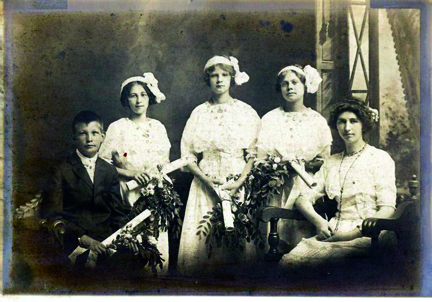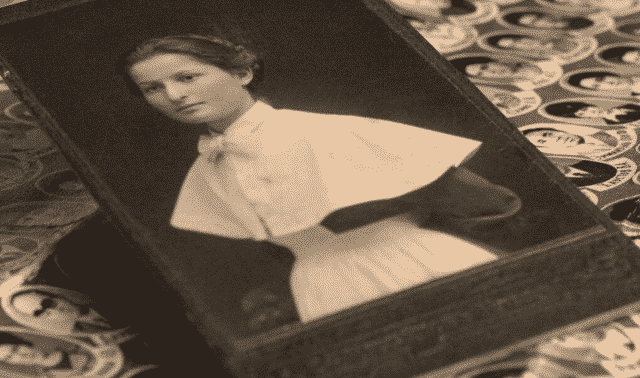While renovating their Camas, Wash., house in 1992, Sandi Alex and her husband found a measuring tape and a lovely portrait stuck behind the lath in a bathroom wall. Whether it fell from an upstairs bedroom or was placed inside the wall as sort of time capsule, we may never know.
Alex mentioned the photo to an elderly neighbor who’d lived on the street her entire life. The neighbor knew the home’s original owners: George Thomas and Emma Mott, who built it in 1918 (a date since confirmed in county tax records). Those reminiscences left Alex wondering if the picture belonged to the Motts.
Alex wanted to reunite it with a Mott descendant, so she posted inquiries on genealogy message boards. Judy Mott Strong saw one of the posts on Ancestry.com’s Mott surname forum <boards.ancestry.com/surnames.mott>. The Motts, Strong’s paternal relatives, lived in the house until 1959. “I love history, and this connection to the past makes our old home come alive,” Alex says.
Finding the occasion for this photo and when was it taken will help determine who’s depicted. A paper enclosure (now lost) had a photographer’s imprint from Wisconsin. That’s a hint: Emma Mott’s Rodwell relatives left St. Lawrence County, NY, for Waupaca County, Wis., before landing in Camas. Emma’s sister, Sarah Rodwell Jones (widowed in Wisconsin in 1917), had a daughter and a son.
The rest of the puzzle could fall into place if Alex and Strong can verify the ages of Sarah Rodwell Jones’ children and compare them to these teens. Sarah’s son, for example, was 14 in 1918, a possible match for the boy. The clues here also help ID this photo.

• The boy and the center girl have similar noses, mouths and eyes—key physical features for comparison. They may be siblings or cousins.
• The boy’s summer-weight suit and the girls’ light-colored dresses indicate the picture was taken during warm weather.
• The four youths, probably in their teens, carry flowers and diplomas (which may be the real thing or photographer’s props), signifying this is a graduation portrait. Notice how the bouquets droop in the heat. Genealogical records might identify the school the Mott children attended.
• Headbands like those on the girls, accented with rosettes, date from 1910 to the early 1920s. They were especially popular from 1910 to 1918. These accessories took the place of a hat, and embellished a hairstyle.
• The three young women wear identical light-colored dresses. The dresses appear to be white, though in this black-and-white image, it’s difficult to say for sure. The style has a bodice that blouses out over the waistband—a silhouette common around World War I.
• The woman seated in a large chair certainly isn’t a graduate; she may be a teacher. Her short-sleeve, warm-weather dress has a lace collar and she wears both a short necklace and a long chain, likely attached to a pair of glasses. Her clothing and her soft hairstyle, with a small ornament and fullness around the face, were popular from 1910 to about 1920.
From the March 2010 Family Tree Magazine



